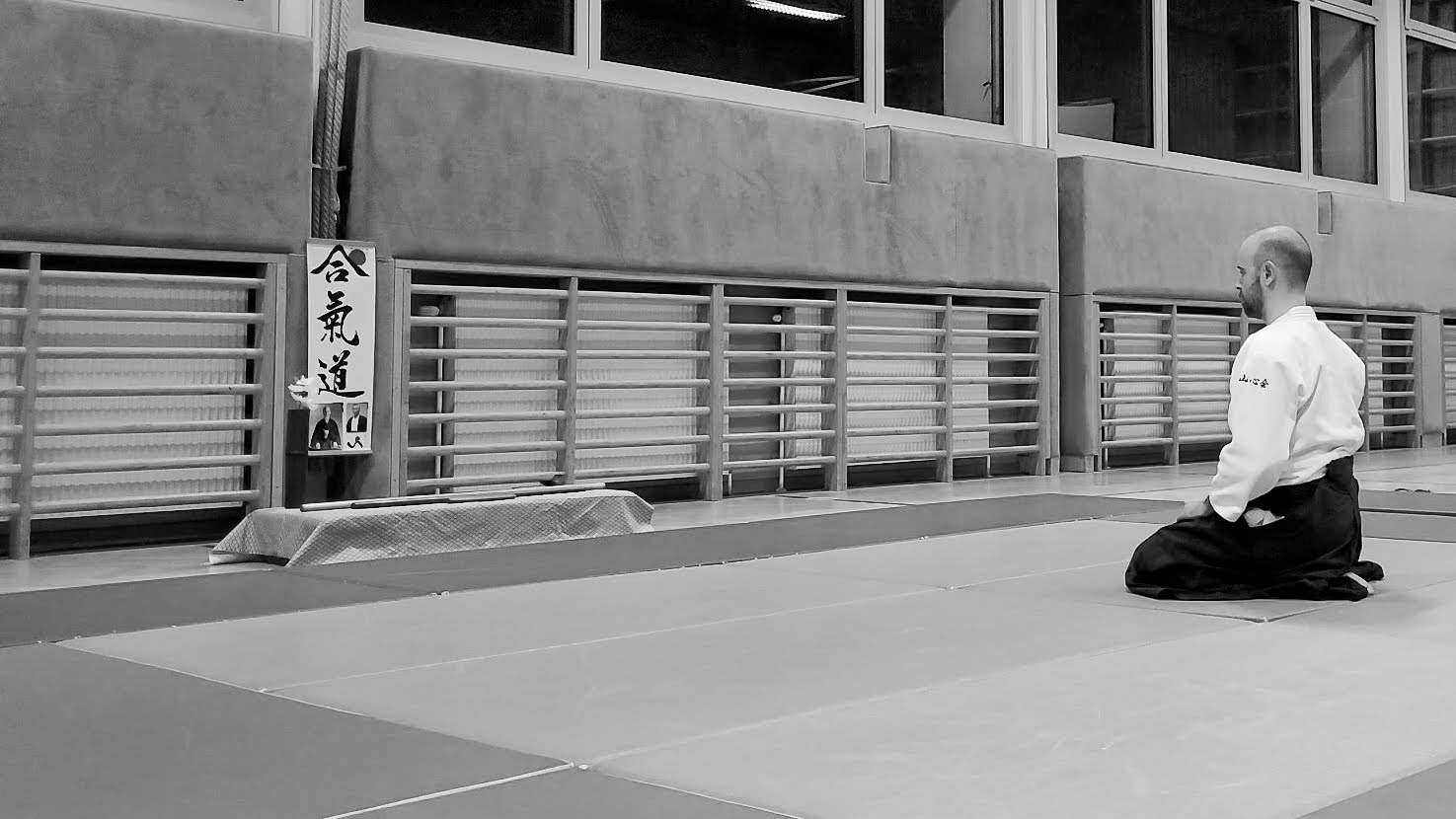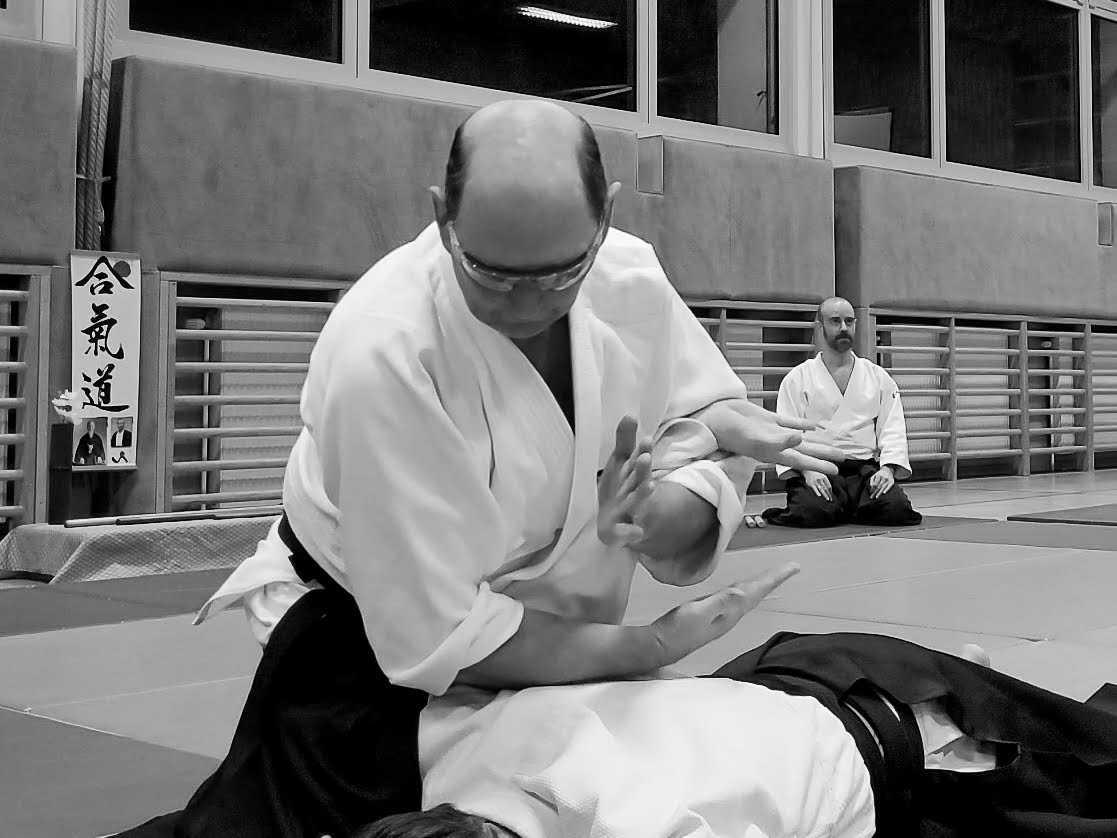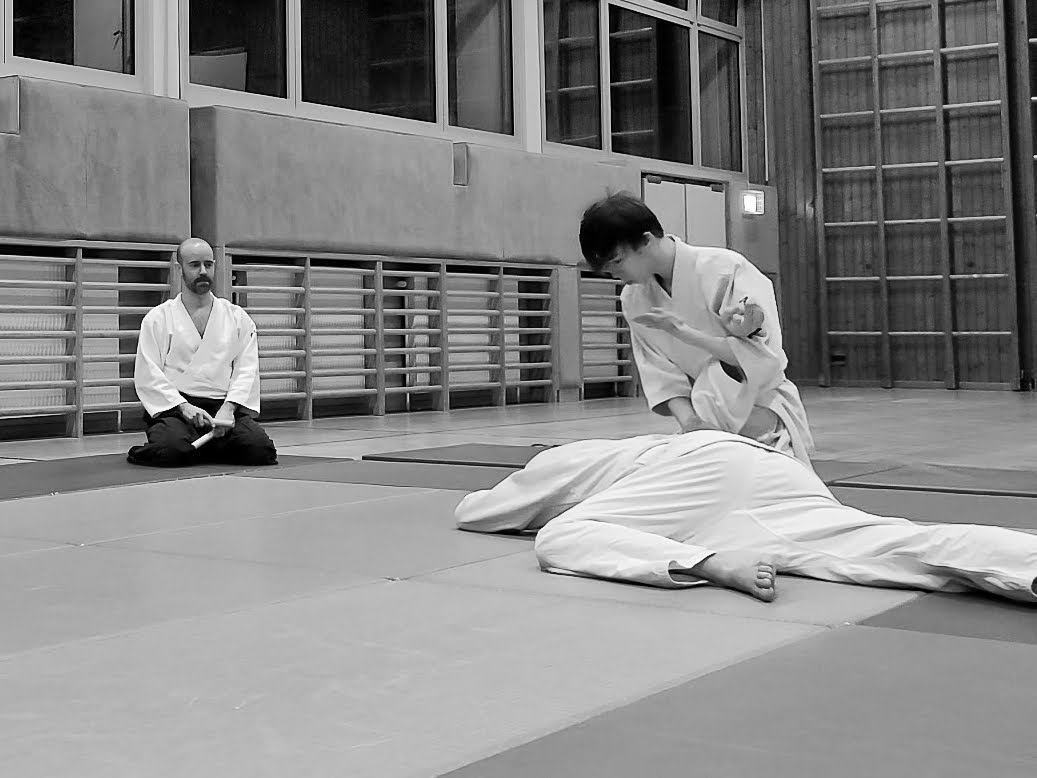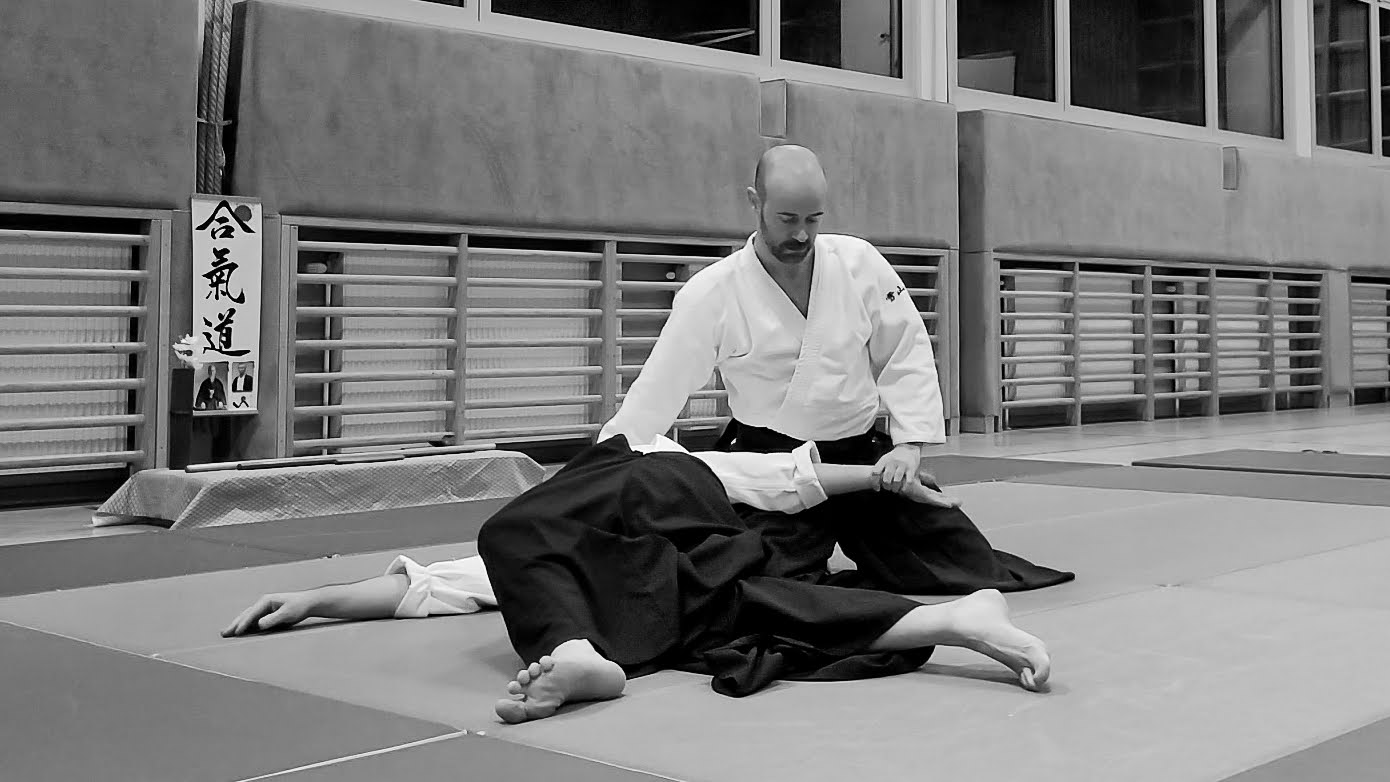How to learn and steal in budo
Western and Eastern cultures are known to differ in many ways. This also includes their respective approaches to passing on and acquiring knowledge. Here are some thoughts on this …
In Europe – or in Austria, if we want to look at our immediate living environment – the parental, school and even university environment have a very strong influence on how we learn – and learn to learn. And even if considerable efforts have been made in the recent past to break away from overly traditional models, a common expectation is still usually to be taught (by a teacher). However, this expectation of being taught – whether intentionally or unintentionally – places a large part of the responsibility for the successful transfer of content (of whatever kind) on the teachers side. In reverse, this also includes the failure of the same.

In the classical disciplines of budo – when teaching them inside or outside a dojo –, however, one should try to move away from the above-mentioned idea. Not because it is meant to be bad, just different. What the person leading a training session (be it the dojo-cho or any other sensei, a trainer standing in for them, a guest trainer, etc.) is showing has to be interpreted as an offer that should be accepted within the framework of one’s individual level – as far as comfortly possible and – in the form presented.
How much of this a deshi (pupil, student) accepts this offer is largely up to the practitioners themselves. Of course, it would be desirable for the participants to try – as best they can – to reflect what is being shown or taught. On the other hand, the teacher should always make sure that whatever is taught is of the greatest possible benefit for all participants (incuding his own person) – but this does not necessarily mean that the selection of exercises must be orientated towards the least experienced participant.
In general it should not be forgotten that there is a hierarchy in budo as well as in the dojo – so one should not expect a democratic form of organisation. The ranks in the dojo are ie. based on the mudansha (junior/beginner ranks) and yudansha (senior grades) as well as the grading model of kohei (those who started later; also tend to be younger/less experienced), dohei (those who started at the same time, those of the same age) and senpai (those who started earlier, the older/advanced ones). In most cases, there are also positional or leadership functions (dojo-cho, training leader, etc.). An interplay of all these elements – and even more – ultimately determines the hierarchy in the dojo.
This means that the responsibility of teaching during practice can also move from the, lets call it the “sensei in charge” to any senpai practising with someone less experienced. It is particularly in this case considered a respectful behavior to guide the kohei to perform in his role as uke/tori as good as possible and in the way the respective “sensei in charge” has demonstrated before. Amongst advanced students it is not at all forbidden to experiment during practise (ideally after trying to do whatever was shown at least a few times as exactly as possible) – but such experiments should better be avoided with rookies to not create confusion or disharmony between the observation of the kohei during demonstration and the actual practise.
Note: In any case, it is considered to be good behaviour to seek following the instructions of the respective trainer in charge and not (or at least not only) make use of the mats as your private training/developing space.
No one-way street
However, learning and progressing in the dojo is therefore not to be understood as a one-way street from teacher to learner (or from senpai to kohei, etc.). The greeting formula after bowing to each other at the beginning of each training session (“onegai itashimasu“) already makes it clear that growth is intended as a reciprocal process and that the spirit of the beginner (shoshin) should always be maintained (you can read more about the different spiritual mindsets here).
- Excursus: „Onegai shimasu“ or the even more humble version „onegai itashimasu,“ which uses „kenjyougo“ (humble language), is difficult to translate directly into western languages. „Onegai“ comes from the verb „negau,“ meaning „to pray for“ or „to wish for.“ The „O“ at the start is an honorific prefix that adds politeness to the phrase. The second part, „shimasu,“ is the verb „suru“ (to do) in the present tense.In Japanese culture, „onegai shimasu“ is used in various situations, typically implying a mutual exchange of goodwill about the future. Another meaning is „please,“ as in, „please let me train with you,“ often used when requesting instruction. It can as well be translated „I make a request“. This is in some dojo conventionally said to one’s partner when initiating practice. It may also be interpreted as: „I welcome you to train with me“ or – even more abstract – as a „polite request for (mutual) instruction“.
The entire learning concept is generally based to a large extent on the most precise imitation – if not even mirroring – and repetition of the exercises and forms shown. By the way, the meaning of a form is by no means always and immediately apparent to all practitioners – especially those who are still at the beginning of their path. On the contrary. The form stands for itself. Filling it – for example with a deeper understanding of its intention – only comes clearly afterwards (we are talking decades here, sorry ^^).

Being aware of this, it is not necessary – contrary to our widespread habit – to scrutinise the learning content comprehensively from the outset, to uncover the background by actually asking questions or even to show one’s interest in the subject by intensivly questioning backgrounds. Initially, it is completely sufficient to concentrate on the aforementioned imitation and to devote all one’s physical and mental energy to achieving the most accurate “mirror image” of what is shown. The degree of accuracy naturally depends on the level of the student, which in turn depends not least on their overall investment in learning.
Particulary for beginners: “When you ask yourself what you should do, observe those you know and imitate them. From this moment on, your training begins.” (see Kishinkaï Newsletter #46 – septembre 2024, Leo Tamaki).
For the more advanced: “Observe the newcomers too and try to put yourself in their shoes (again). This will help you to understand them better and you will be in a better position to guide them favourably. After all, isn’t 初心 shoshin, the beginner’s mind, the key to progress?” (see Kishinkaï Newsletter #46 – septembre 2024, Leo Tamaki)
However! This does not mean that you should or may not ask things. On the contrary. Asking questions is possible and desirable at every stage of budo development – but does not have to take place during active practice, particularly not in a way of a discussion between uke and tori. In general – also because the teachers themselves are usually so much used to it – there is anyhow a lot more verbalisation in Western budo than would be usual in Japan. The Eastern way economises on words, explains – if at all – rather figuratively and places the emphasis on (exemplary) demonstration/experience. It is therefore up to the learner not only to extract the obvious from a demonstration, but also to gradually recognise more subtle nuances and inner forms and integrate them into their own repetition and practice.
At this point, reference should also be made to a special feature of the concept of learning and the development of skills and abilities: While the Western approach tends to assume a linear development (be it straight or in wave shapes iw.), the budo-way is more oriented towards an inwardly striving spiral form, in which one steadily approaches the centre or the heart of a matter – or even the universe, maybe – through repetition and the recurring return to the basic principles of the art.
“There are times when you may be overwhelmed by the teachings of the Way. At such moments, it is important to continue with the original spirit of a beginner.”
– O-sensei Morihei Ueshiba
It is therefore not to be understood as a direct movement towards an ideal, but rather as a circling with a leisurely but continuous approach to a centre point which – however close the approach may ultimately be – can hardly be fully reached; implicitly, therefore, the manifestation of lifelong to intergenerational learning and the (tacit) acceptance of the fact that, seen over time, there are natural limits to physical strength, but none to (artistic) skill (dexterity, talent, etc.).
Note: Even if specifically regarding Aikido the author of this article is admittedly attracted by the described way of Japanese teaching/learning ideals, this should not be interpreted as a “this or that way is better than others” – but simply pointing out different approaches and its possible benefits in developing budo.

Protect, break through, move on
A little more concrete in relation to the development levels in budo is the principle of shu-ha-ri – but be aware: this principle is not or only partially related to the levels from junior rank (kyu) to senior rank (dan) and is to be understood in a more superordinate way. This is a philosophy of training which can be found in Aikido and any other “do” martial art. Slightly simplified: shu means to protect the original, ha means to break through, and ri means to move in one’s own way (see Fukushidoin, or just more training, Hideki Okuda, Aikido Daiwa). Tamura Nobuyoshi shihan explained the concept like this (please, pay special attention to the very last sentence):
“In shu one scrupulously follows the teachings of their master until one can reproduce the techniques exactly. Once one gets to that level one tries to see what such and such a change implies. One leaves the mould to continue studying. That is ha. Finally one overcomes the contradictions and the technique becomes one’s own. This is ri. These days people want to start with ri! (laughs). They cannot do as the master does, so they seek another way. They cannot do one thing so they do another. In that case, it is better to do something else from the beginning. And if I correct people, they tell me that they cannot do it, that it is impossible. But it is useless to do something that you can do easily. Studying implies trying to do something that you cannot do! There is no shortcut.” (see Interview: Tamura Nobuyoshi, the eagle of Aikido, Leo Tamaki)
In order to give a time horizon, merely as a rough guide, reference should be made to a contribution by Malcolm Tiki Shewan shihan – along with Stéphane Benedetti shihan as well Technical Director of Mutokukai. The statement comes from a teacher talk in 1983: It begins by saying that “all time indications are relative” and that “this system can only be applied to ideal situations (…)”.
- shu: “It takes about 20 years. You should study with a single teacher without asking questions.”
- ha: “Duration approx. 20 years. The teacher sends the student out to learn (comparable to the travelling years of journeymen in the European Middle Ages).”
- ri: “Formation of own school and start of own development possible (can be proven by the example of O-Sensei [note: Morihei Ueshiba, founder of Aikido]- he entered this stage at the age of 55).”
“To simplify, we can say that shu corresponds to imitation, ha to exploration, and ri to mastery”, as written in an article by Leo Tamaki sensei (see “Learn how to learn Aikido”, Leo Tamaki 2016).
Excursus: Tori and uke “must work cooperatively”
As Tamaki sensei further specifies: “When we begin martial arts practice, we tend to focus on the end of a movement, which happens to aïte (authors note: uke). But this is only a consequence of correctly carrying out all the previous steps. Focusing on it prevents us from seeing the path that allows this result. As a result, we see many practitioners taking liberties to arrive at an end that has a very relative resemblance to what has been demonstrated.” The first step of the study should be “reproduction”. At this stage, tori and uke “must work cooperatively”. (…) Uke has to “perform a correct attack in terms of time, distance, form and intention. And he must reproduce the effect by matching tori, if tori is not able to create it”. At this stage, the role of uke is “more difficult than that of tori“. Because without knowing how the technique works, he can reproduce the effect too early, too late, or incorrectly. In Aikido, it is possible to limit errors by concentrating on a “very slow execution of the movement”. (see “Learn how to learn Aikido”, Leo Tamaki 2016)
So why is stealing appreciated
As mentioned at the beginning, learners should internalise the mindset of absorbing as much as possible from the teaching content on offer, depending on their own ability. However, you should not assume that everything there is to know and experience will be taught proactively. Some things are hidden in a zone that can only be recognised by observing with an open heart and decoding and internalising them over time. And this is precisely where the term or concept of “stealing” comes into play – regardless of whether it is a dojo in Japan or anywhere else in the world – in a connotation that is in no way negative.

His (editor’s note: Maruyama Koretoshi) thinking, “to many western minds, may seem old-fashioned, and very Japanese. He teaches the same way that O-Sensei did, that if one is to understand the essence of any technique, one has to ‘steal’ it. And (…) he told me that, in fact, Tohei (editor’s note: Koichi Tohei) “followed the same mindset, that the essence of his teaching had to be perceived and absorbed, because it was not something that could be explicitly taught”. (see “It Had To Be Felt”, no. 74, Maruyama Koretoshi: “The Essence of Mind”)
This also means that it is in no way considered disrespectful if a budo student goes to great lengths to steal the essence of an art or technique from his/her master. Quite the reverse. It is sometimes even expected and can be seen as an honour, as the student has to devote a great deal of attention to the teacher and (training) time in order to be able to accomplish this stealing. And at the end: Shouldn’t it anyway be the aim for every student to surpass their teacher/s?
And yet: Sometimes the teacher simply helps to find the key, unlocking the door and walking through can only be done by the student themselves. However, some things cannot be taught, some things have to be recognised over time and with one’s own heart. And more often than one may expect, through shoshin the students are teaching their teachers the very best lessons of all!
どうもありがとございました.
Domo arigato gozaimashita.
F.S.
Sources:
Shewan, Malcolm T. (2006): Lehrergespräch (transscript)
Hadamitzky, Wolfgang (2012): Kanji und Kana: Die Welt der japanischen Schrift in einem Band
Hideki Okuda, Aikido Daiwa (2012:): Fukushidoin, or just more training
http://biran.birankai.org/?p=56
Leo Tamaki (2024): Kishinkaï Newsletter #46 – septembre 2024
Leo Tamaki (2011): Interview Tamura Nobuyoshi, the eagle of Aikido
https://www.leotamaki.com/article-interview-tamura-nobuyoshi-l-aigle-de-l-aikido-77477356.html
“Learn how to learn Aikido (…)”, Leo Tamaki (2016)
https://www.leotamaki.com/2016/03/apprendre-a-apprendre-l-aikido-et-autre-pratiques-martiales.html
“It Had To Be Felt”, no. 74, Maruyama Koretoshi: “The Essence of Mind”
http://www.aikiweb.com/forums/showthread.php?t=25863
Taylor, Michael W. (2004): Aikido terminology. An essential reference…
en.wiktionary.org (2024)
jisho.org (2024)
Author’s note: I do not wish the articles I have written to be understood as the last resort, and I make no claim to completeness. Rather, I hope to be able to make a contribution to a juxtaposition of interpretations and a lively debate about Budo. I would also like to politely invite all readers to comment, critically scrutinise, edit, supplement, etc. Thank you very much.